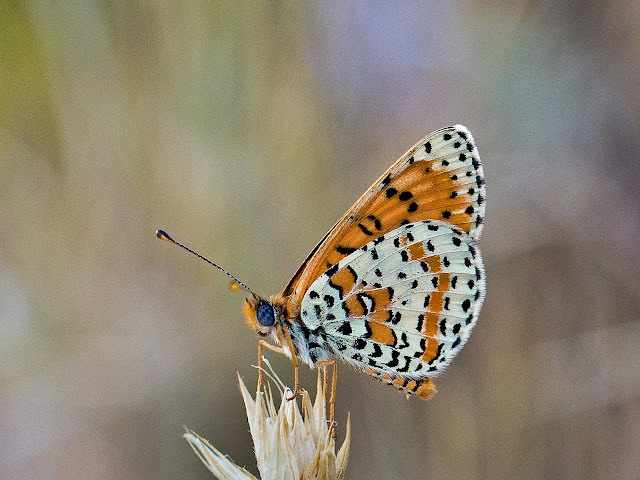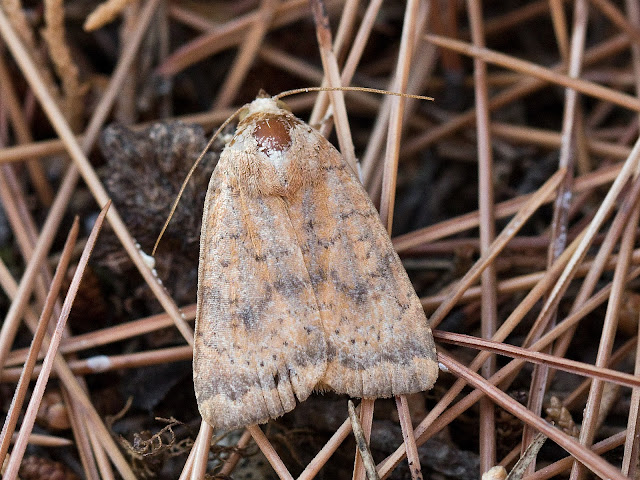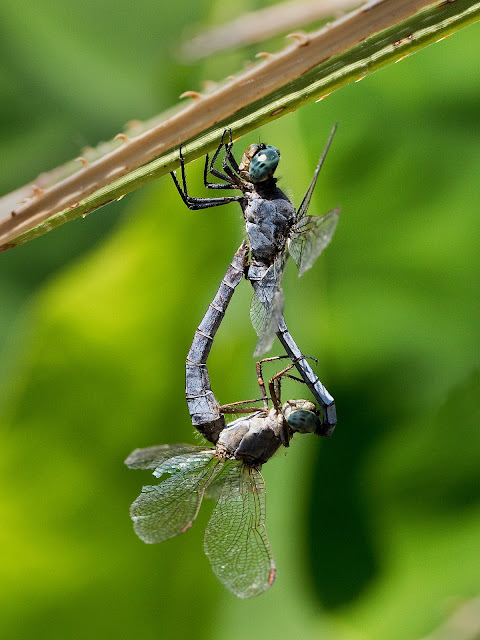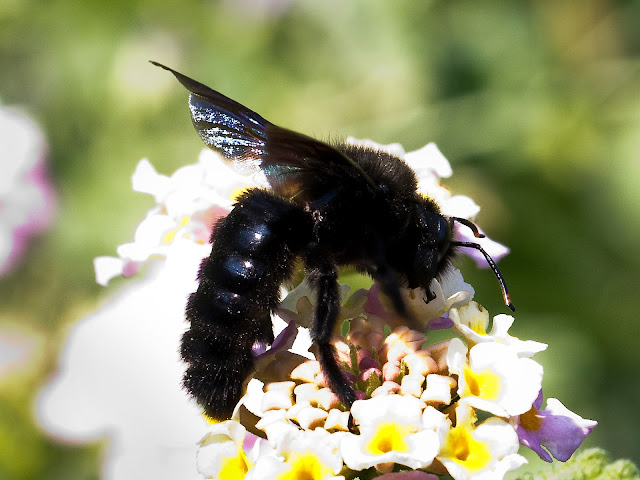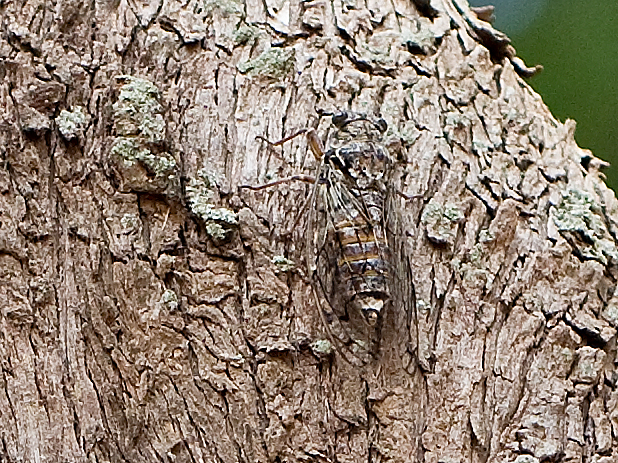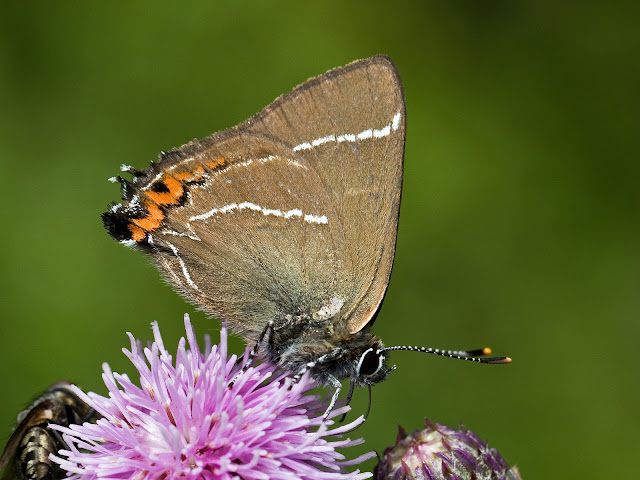Long trips up the M6 are getting to be a habit this year but with Dave only needing the Scotch Argus to complete his set and with Arnside Knott being the closest location of a colony another visit was inevitable. It also had the benefit that I could tick off the Scotch Argus and I am now only left with the Swallowtail to get next May.
We left at 0530 on Wednesday and were wandering around Arnside Knott looking for butterflies by 1130. If only all trips up there were as easy. The butterflying community is very helpful and an exchange of data with the first people we met soon had us onto our first Scotch Argus.
 |
| Scotch Argus - looks freshly emerged |
We struggled at first, the butterflies were on the wing but it was cool and cloudy and every time the sun went in they flopped down into the thick grass.
 |
| About to crawl into the grass |
We got a few record shots but then, with rain coming in, we retreated back to the car for lunch. A short while later, much refreshed, and with the weather warming up we returned to the hunt. This time it proved a bit easier. The butterflies weren't exactly posing for pictures but at least they were staying out in the open. You had to be careful approaching them and they were very flighty but there were some good picture opportunities on offer.
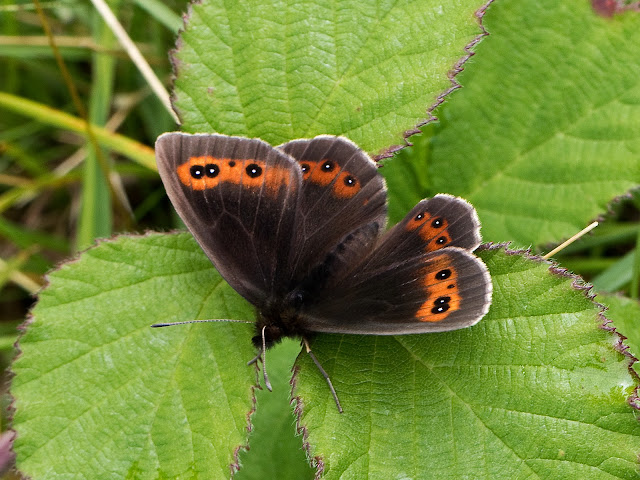 |
| Settling out in the open |
 |
| and now with too much sun and reflections off the leaves |

Later in the day we had a few out nectaring on the brambles which gave different views.
With the Scotch Argus in the bag on the Wednesday we had a free day Thursday and no real target. We thought about a return visit to Meathop Moss but there was also Gait Barrow close by, a place we had not visited before, and we decided to give that a go.
Gait Barrows is an area of Limestone Pavement and wetlands. Great to explore although in the time we had available we did not get as far as the wetlands.
I don't do Orchid twitches but it was nice to see a number of Dark-red Helleborine growing amongst the rocks. Most had gone over but Dave still managed to find one worth recording.
 |
| Dark-red Helleborine |
The site has a number of Butterflies and we set off to look for Fritillaries and for Grayling. No sign of the Fritillaries although the occasional Tortoiseshell had us rushing off in pursuit.
 |
| Tortoiseshell - nice condition but still with a piece of its tail missing |
There were lots of Ringlets, Meadow Browns, and Gatekeepers, and even one really tatty Common Blue but we could not find the High Browns and Northern Brown Argus that had been reported there.
 |
| Gatekeeper |
Fortunately the day was saved when Dave came across a small group of Grayling. They are not the easiest of butterflies to spot as they usually shuffle around the ground, only flying short distances.
 |
| Grayling - shows up against the light coloured rock |
 |
| but cryptic camouflage works well on broken surfaces |
They lean over when perched to present the biggest possible surface to the sun which breaks up there front and rear silhouette.
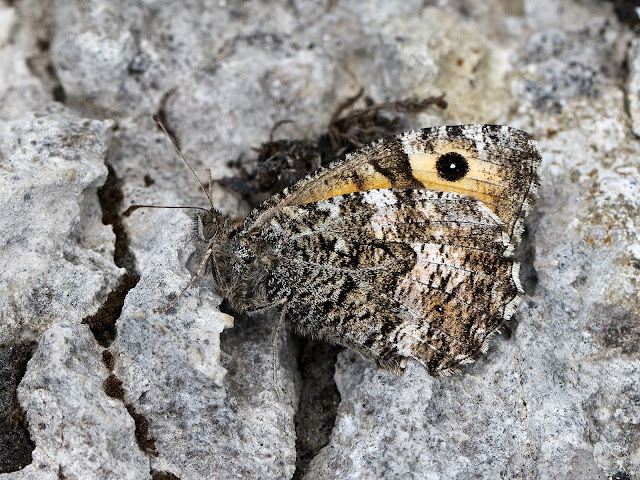 |
| When threatened the Grayling flips up its forewing to present a large eye |
 |
| or even two eyes |
 |
| It's unusual to see them perched off the ground |
 |
| Nectaring on bramble |
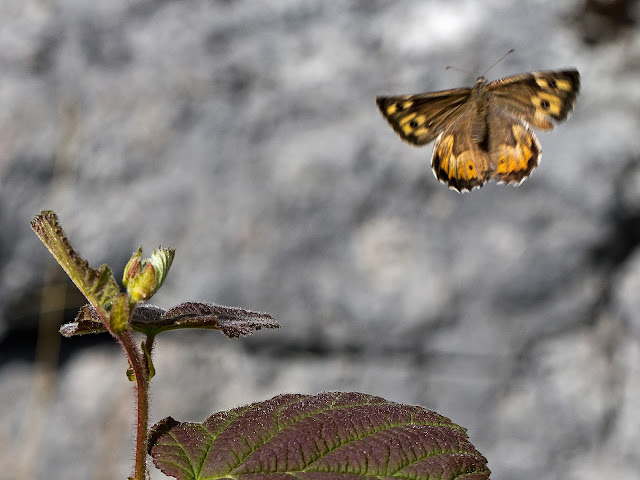 |
| and the miss of the day this was very nearly an open winged shot but I needed a bit more shutter speed |
Only the Swallowtail to go to get the full set of Mainland UK butterflies plus perhaps a trip over to Northern Ireland to get the Cryptic Wood White. The Swallowtail Papilio machaon britannicus the only endemic UK butterfly and the largest butterfly in the UK seems an appropriate end point. Its just that next May is a long time to wait.




